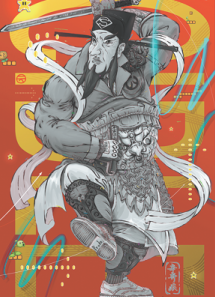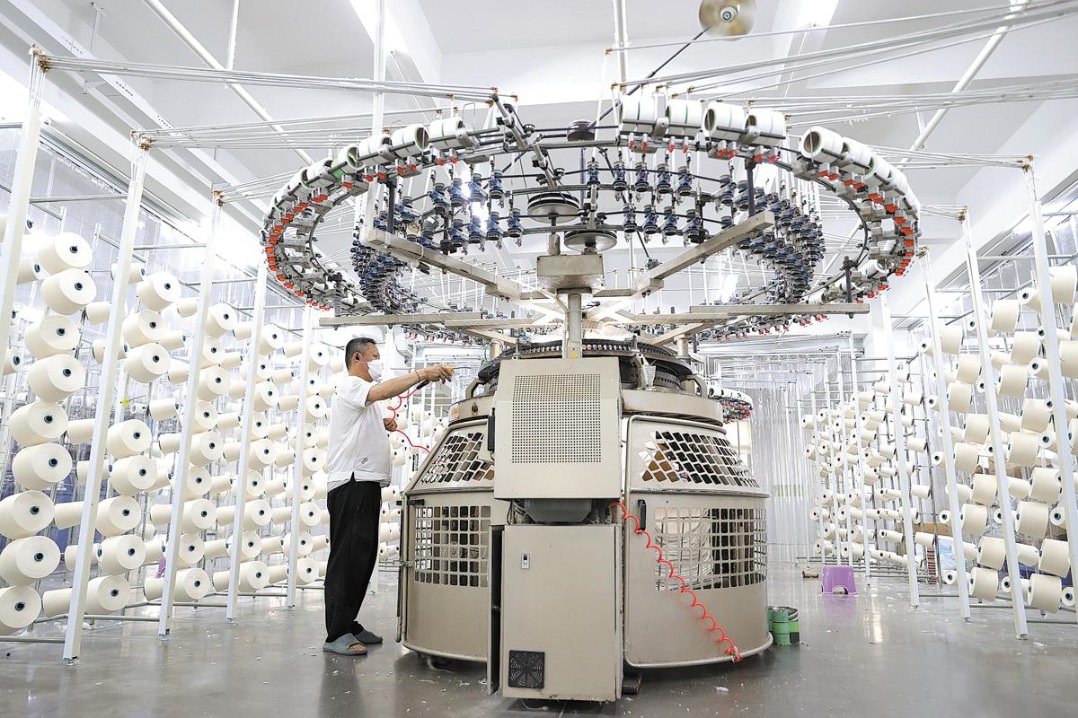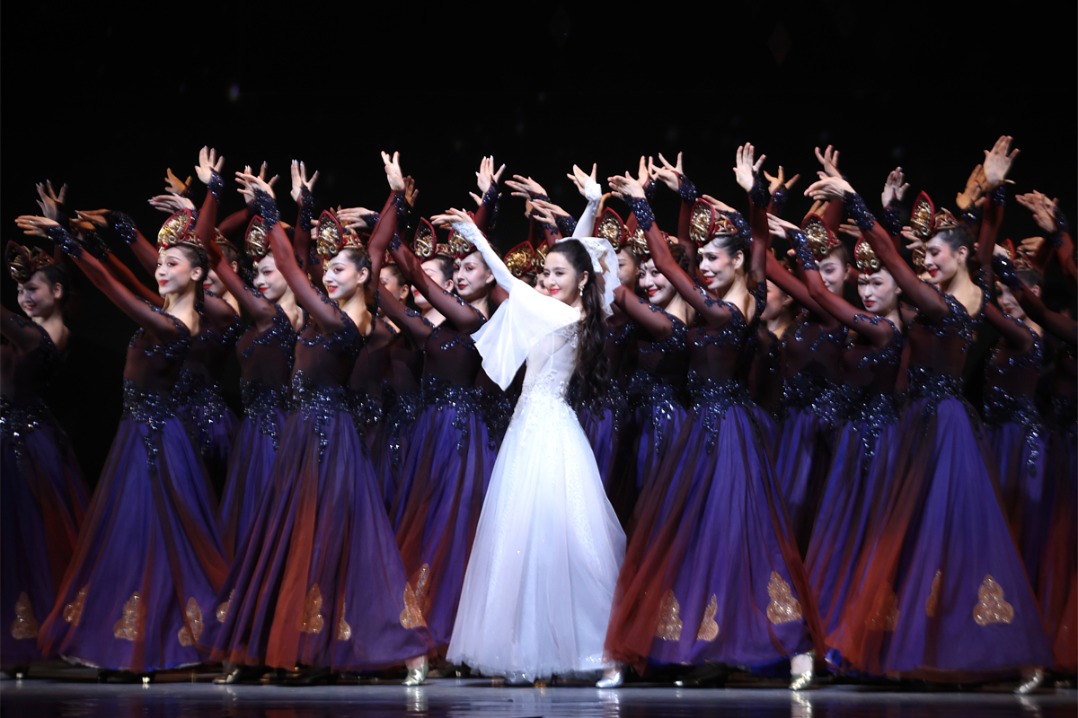A picture of the future
Shanghai auction company sells digital art aimed at young buyers, Deng Zhangyu reports.

When an auction on digital art was held on Dec 31 in Shanghai, the room was bustling with collectors, investors and crypto-savvy bidders ready to offer money to show their support for nonfungible tokens, cryptographic material on a blockchain.
"NFT art will be embraced by younger generations who live in cyberspace. We wanted to introduce the future art to collectors," says Yu Xiaowei, manager of the modern and contemporary art department at Shanghai Jiahe auction company.
NFTs are unique digital assets, including JPEGs and video clips, represented by codes on the blockchain. The technology can track the ownership and validity of each NFT when it is bought or sold.
It was the second time Shanghai Jiahe held an offline auction, featuring NFT art, a relatively new medium for the art world. In June, the auction house presented six pieces of NFT art for the first time and the number jumped to 87 at its December auction.
"From June to December, the situation had totally changed, especially after the concept of 'metaverse' hit the internet in October," Yu says.
Over the past few months, artists, collectors, investors and young buyers have turned to Yu to inquire about NFTs. Yu says NFTs are popular among people born in the 1990s and the 2000s-groups that are fond of inhabiting cyberspace. "NFTs are their bragging rights in the virtual world."
She adds, "We're investing in future generations."
Beijing and Shanghai have put "metaverse" into the agenda of their development plan in 2022, according to the government work reports released online. The local government of Xuhui district in Shanghai announced earlier this month that it would support and develop NFT art.
Last year, NFTs were still new to the majority in the art world. But digital artist Mike Winkelmann, known as Beeple, took the art world by storm when his NFT, titled Everydays: The First 5000 Days, got more than $69 million at an auction at Christie's in March last year. The record-smashing sale of a JPEG file of a collage of 5,000 images made Beeple one of the "top three most valuable living artists", according to Christie's.
Zhang Lei, founder of Topholder, an online platform that trades NFT art, says many artists came to him to inquire about NFTs and blockchain technology after Beeple's auction. Zhang cooperated with an art fair in Beijing in 2019 to provide blockchain technology for artists presented in the fair. However, few knew about the technology or showed interest in it back then.
"Compared to established ones, young artists are more likely to embrace NFTs," says Zhang.
On Zhang's platform, there are more than 1,000 artists creating NFT-related art. Zhang selects them mainly through the internet and only meets some of them offline. In contrast, traditional galleries select artists by meeting and talking with them in person.
Buyers on Topholder are mostly those in their 20s who regard digital art as a future trend, satisfying their aesthetic tastes, says Zhang.
"For many, whether NFTs are collectible is still to be discussed. Some buy it to show their support and believe that people will spend more time in the virtual world."
The new art medium also enables various creators to become NFT artists, such as illustrators and designers who are good at computer graphics.
Digital artist Yu Yang started painting on his tablet many years ago. The 43-year-old learned design at Peking University and oil painting in Hunter College in New York. He has three iPads for painting.
As one of those artists who actively embraced blockchain, he says NFTs are good for artists to guarantee their works' authenticity and validity.
Yu Yang combines traditional culture with pop culture. His series of the Chinese "door god" in hip-hop style is popular among young collectors. The youngest among his buyers is 17.
Many of his works are sold online. One of his NFTs from the series was sold at Shanghai Jiahe's auction. Apart from the digital works, he also creates physical pieces and sells them at art fairs.
A fan of Beeple, Yu Yang devoted himself to digital art when visiting New York in 2018.
After returning to China, he started to share his works on social media. Now, he has more than 310,000 followers on Sina Weibo.
"NFTs are still very new, but they have decentralized the traditional art market," says Yu Yang, adding that he does not have to sign with a gallery to sell his works.
"In the long term, NFTs will benefit artists, especially young artists who don't have resources to reach their buyers."
He says he has to think about how to better transform his work into NFTs when creating a piece even if he is familiar with the new area.
Qin Jianxin, co-founder of Cryptoart.ai, an NFT art trading platform, says the number of artists who can directly create their works with digital skills is still small in China. An artist must first know how to use the language of digital art and then produce NFT art based on blockchain.
"Crypto art has been developed for three years outside China. It's still very new and in an early stage in China," says Qin.
"Audiences need to be educated. But I believe China has the potential to become the biggest NFT art market."





Today's Top News
- Tourists flock to locations featured in hot TV shows
- Intl volunteers serve as bridge linking Jingdezhen, world
- Global investors more bullish on Chinese assets
- Advanced weapon systems make debut
- Authority suspends antitrust investigation against DuPont
- Playing its appointed part in US' strategy will not bring Manila its desired rewards






























